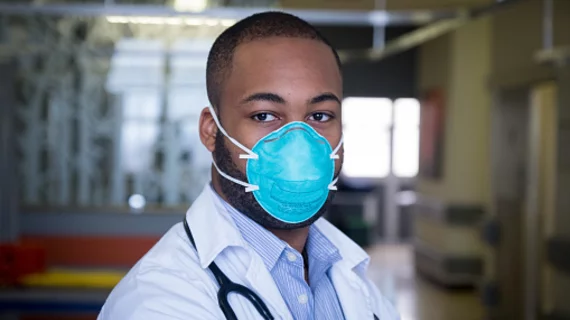8 key takeaways from a new report on physician burnout and happiness during the pandemic
Has COVID-19 increased burnout among cardiologists and other physicians? Are some specialists feeling the pandemic’s impact more than others?
Medscape has aimed to address those questions, and many more, with its annual survey on physician burnout throughout the United States. More than 12,000 physicians from dozens of specialties participated in the survey, and 4% of those physicians were cardiologists. Data was collected from Aug. 30 to Nov. 5, 2020.
The Medscape National Physician Burnout and Suicide Report 2021 is available in full on the company’s website. These are eight key takeaways:
1. 42% of U.S. physicians reported struggling with burnout
Medscape specifically noted that the pandemic has made burnout a bigger problem in 2020, but the actual percentage of physicians reporting burnout is the same as 2020. When the report digs closer into its survey responses, it does become clear that COVID-19 has done serious harm to the happiness of physicians—but looking at this one main statistic, the numbers remain unchanged.
2. 43% of cardiologists reported struggling with burnout, which is 12th among all specialties
While this number is slightly higher than the national average of 42%, it is slightly lower than the previous year, when 44% of cardiologists reported experiencing feelings of burnout.
3. Burnout is considerably higher for women than men
The burnout rates were 51% among women and 36% among men
“Women have consistently reported higher percentages of burnout than men over the years, but this disparity was greater than usual,” according to the report.
Carol Bernstein, MD, a psychiatrist for Montefiore Medical Center in the Bronx, New York, noted that one reason for this year’s significant difference between men and women is likely the fact that “many women physicians are in families with children at home.”
“It’s already known that women assume more responsibilities in the home than men do,” Bernstein said in the report. “The pressures have increase during COVID-19: having to be their child’s teacher during homeschooling; no childcare; and the grandparent’s can’t babysit. Those all bring enormous pressure and burdens.”
4. For some physicians, burnout wasn’t an issue until the pandemic
While a majority of physicians said their burnout began before the pandemic began, 21% did specifically say that it started for them after the pandemic. One physician, replying to the report, described it as “death by 1000 cuts.”
5. The pandemic has had a significant impact on physician happiness
How has COVID-19 affected your overall happiness? While 69% of physicians said they were happy or very happy before COVID-19, that number was just 49% after the pandemic had started. Also, while 4% of physicians said they were “very happy” before the pandemic, that number is now at 10%.
6. Physicians think increased compensation and an improved work schedule could help with their burnout
What do physicians think would help them with their feelings of burnout? The most common answer (45%) was increased compensation. While another 42% said a more manageable workload and work schedule would help, 39% said they simply want to feel more respect from their employers, colleagues and/or staff.
Also, 5% answered that not being asked to treat COVID-19 patients could make a big difference and help reduce burnout.
7. ‘Too many bureaucratic tasks’ was the most common reason physicians reported feelings of burnout
While 58% of physicians said “too many bureaucratic tasks” were to blame, another 37% said they were being asked to spend too many hours at work. Also, 37% of physicians pointed to a lack of respect from employers, colleagues and/or staff.
8. Compared to other specialties, thoughts of suicide are rare among cardiologists
While 13% of U.S. physicians said they have had thoughts about suicide, that number is lower than average when looking specifically at cardiologists. In fact, cardiology was not included on Medscape’s list of specialties most affected by such thoughts; this means the percentage was less than 10%.
(Editor’s note: This website is available to anyone having suicidal thoughts. It includes a hotline that is available, for free, 24 hours a day.)

